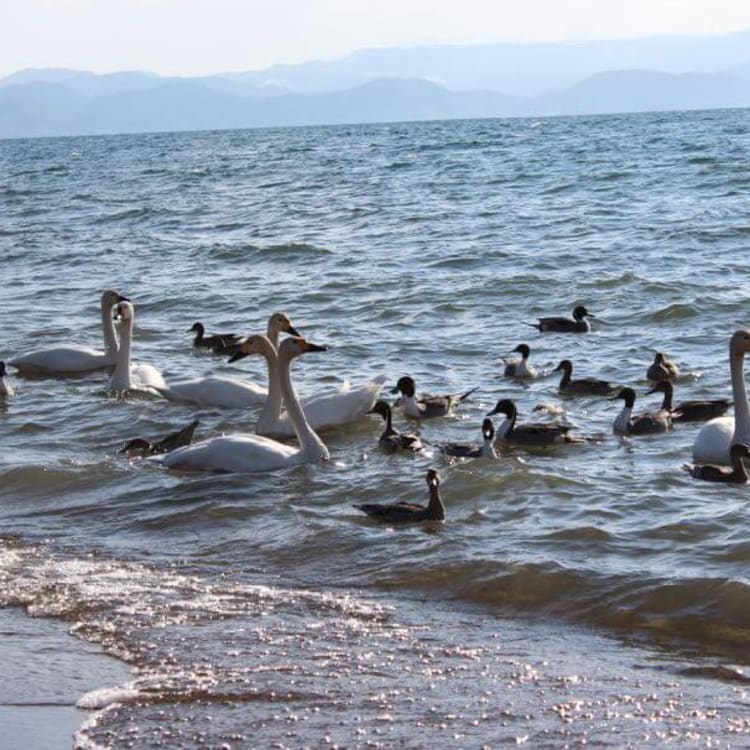
Story 5 new reasons to spend your winter in Fukushima by JNTO on 03 March 2017
If you are traveling in Tohoku and love nature, I recommend taking your family to Fukushima Prefecture. This might come as a surprise, but I’m not going to talk about cherry blossoms in spring, fresh greenery in summer or autumn leaves. I’m going to share with you beautiful spots your family can visit in Fukushima during winter!
1.Inawashiro Lakeside
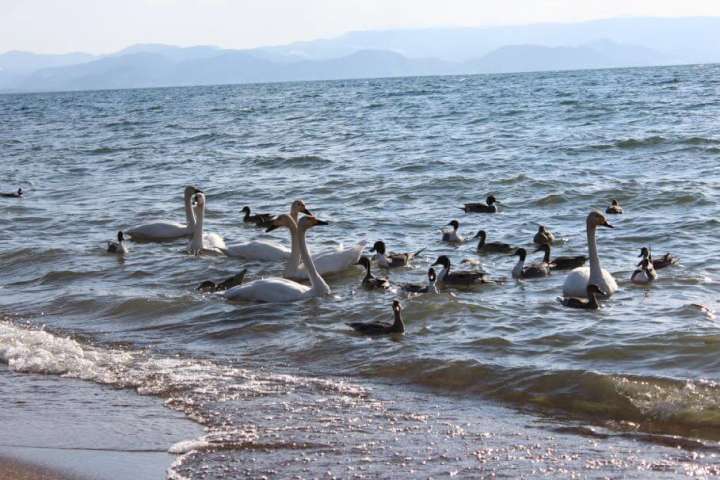
First, let me introduce Inawashiro Lakeside, also called Shiratorihama. In summer, it is usually crowded with people who like to take a dip in the lake. However, in winter, it is full of swans and ducks that love the cold water!

This beautiful place can be reached by taxi or bus from Inawashiro Station. When I visited, the lake was pretty choppy because of the strong wind blowing down from Mount Bandai. I’ve got to give it to the swans – they were totally unfazed and were happily bobbing up and down, and fluttering their feathers. It was so cute to see the swans and ducks getting along with each other. I thought they’d fight! This precious sight is something you can only witness in winter!

My kids were so thrilled to observe the birds so closely. Do bring your family here to watch swans and ducks up-close!
Inawashiro Lakeside
Lake Inawashiro, Fukushima
Website: www1.bandaisan.or.jp/ib/en/
2.Mount Iimori Sazae-do
Mount Iimori is an interesting place to visit because there is a really unique building called Sazae-do, which looks like a turban. Despite its appearance, it’s actually an important cultural asset in Japan.
Before I share more about Sazae-do, let me give you a bit of background about Mount Iimori. This mountain is famous for Byakko-tai (men’s military unit), which was active in Fukushima at the end of the Edo period. Many Japanese come here to pay respects at the tombs of Byakko-tai.
Now, how do you get to Sazae-do? Easy. Just walk five minutes from Limori Yamashita Station. You’ll come to a steep stone stairway (about 183 steps) at the base of Mount Iimori, which can be quite dangerous when it is snow-covered. Don’t worry, there is an alternate route that is safer.
Pass the front of Byakko-tai Memorial Museum, go around Itsukushima Shrine, and you’ll find a gradual slope and staircase. If you still find it dangerous, there’s an even safer option, which I think is the best for your family: take the slope conveyors that costs roughly 250 yen per adult.

You’ll recognize Sazae-do from its spiral exterior, but the surprising thing is that the interior of the building is spiral too!

There is a one-way slope up the inside of the building and another that takes you back down.My kids had such a fun time. It was like being in a mysterious place.
In the past, 33 Kannon statues were placed along this slope. It is said that if you worship each statue, it’ll bring you good luck.
Want to check out this amazing building? Adults just need to pay about 400 yen for entry. For high school students, it’s 300 yen and 200 yen for primary to junior high students
Mount Iimori Sazae-do
1404 Bentenshita, Ikkimachi Yahata, Aizuwakamatsu-shi, Fukushima
https://www.japan.travel/en/spot/1762/
3.Aizu Painted Candle Festival

Aizu Painted Candle Festival is an event showcasing a traditional craft of Aizu – making candles using plants as a raw material. Beautiful flowers and trees are also painted on the candles.
In the past, these painted candles were a rarity in Japan. Although they aren’t commonly used at Buddhist ceremonies, they are sometimes displayed at Buddhist altars in family homes during winter when flowers are seldom sold. Today, these candles are more like souvenirs!
During the Aizu Painted Candle Festival, your family can enjoy the beautiful sight of Tsuranga Castle fantastically lit up by painted candle
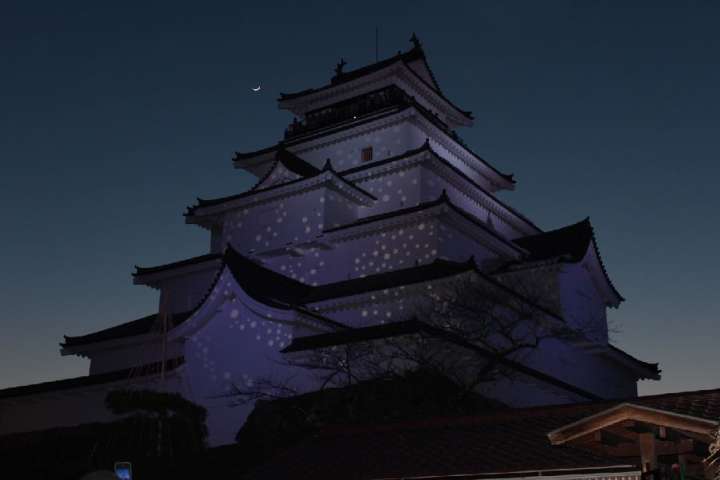
You can also carry your own lamp, which is lit by a picture candle.

Last entry to Tsuruga Castle Tower is typically in the evening. However, during the festival, Tsuruga Castle Tower is open at night. You should definitely visit as the view from the top of the castle tower is stunning. All you have to do is pay an entry fee of about 410 yen.
Want to bring home an Aizu painted candle as a souvenir? Pop by Yamagata-Ya main store near Aizu Tsuruga castle. Here, your family can even try your hands at making a painted candle.
Aizu Painted Candle Festival
1-1 Otemachi, Aizuwakamatsu, Fukushima
Website
4. Ouchi-juku
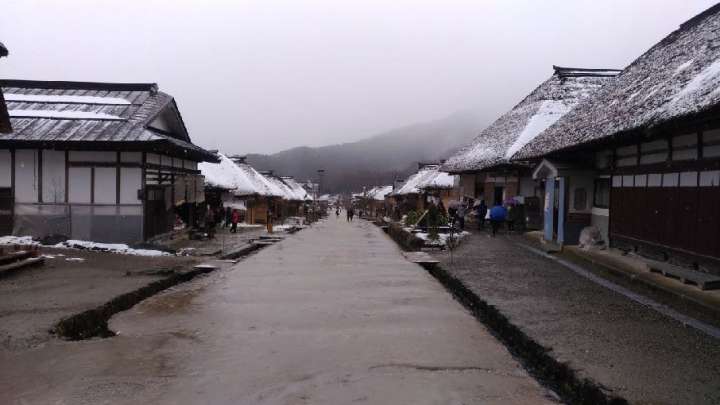
Want to see a signature winter street scene in Fukushima? Check out Ouchi-juku. To get here, just take a 10 minutes taxi ride from Yunokami Onsen bus-stop. Even when I visited when it wasn’t snowing, the street was still so lovely! This town from the Edo era (1603-1867) with its traditional buildings has been designated as a preservation district.

My family and I strolled down the street and came to a row of roofed houses that were made of rice ears. These houses have been refurbished into hotels, restaurants and souvenir shops. Isn’t it cool that there are people still living in these old buildings?
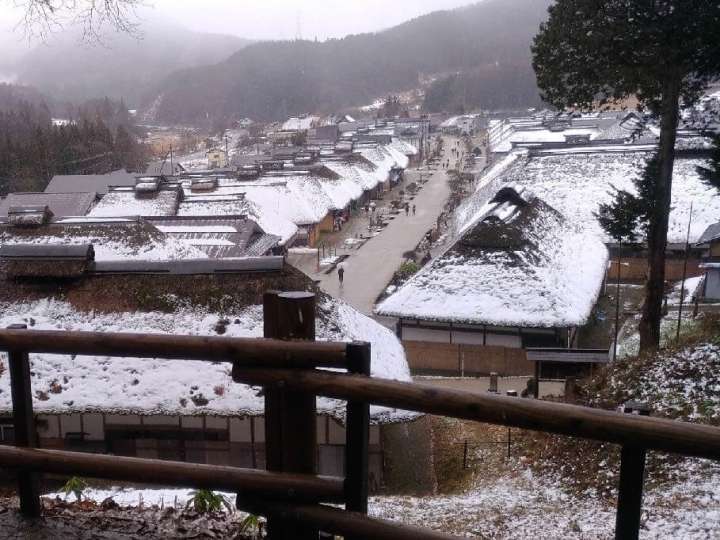
Just a tip: The scenery of Ouchi-juku is best viewed from the hill. The sight of snow on rooftops is distinctive of Fukushima in winter.
Ouchi-juku
Yamamoto, Oji Ouchi, Shimogo-cho, Minamimaizu, Fukushima
Website
5. Sobadokoro Komeya
Planning to visit Ouchi-juku? Let me recommend a shop with delicious grilled food – Sobadokoro Komeya.

When I entered the shop, the first thing that caught my eye was the huge hearth for grilling food. My kids were really intrigued by the traditional vibes. For me, I was lured into the shop because of the smell of food!
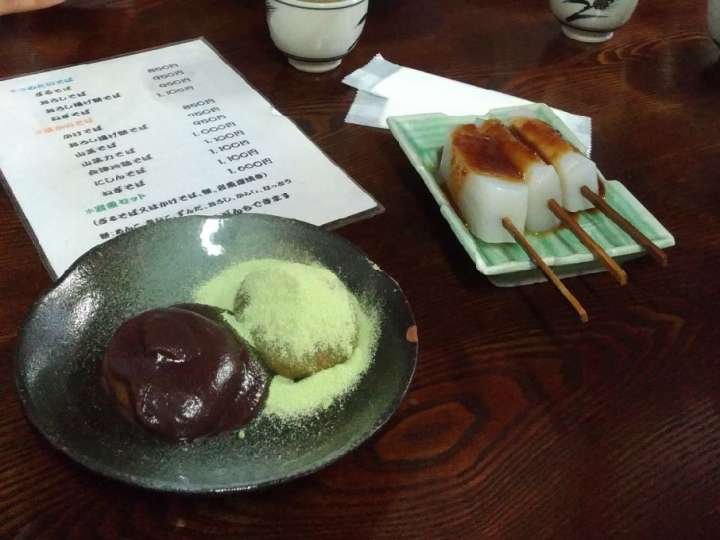
We ordered lots of macha and had it with soba tea for maximum enjoyment.
Tochi-mochi is a specialty of Ouchi-juku that is only available in Japan! Pull lye and steam chestnuts together with glutinous rice and you have Tochi-kochi. It is in ocher and brown color, and is less sticky compared to Mochi with only glutinous rice.

At Sobadokoro Komeya, you can enjoy different flavors of Tochi-mochi like mushroom and anko, all for 1,000 yen to 2,000 yen. My favorite is the one containing berries. It’s so tasty and I love its chewy texture. I also like the miso takara with its flavorful miso taste.

My son ordered the freshly baked Imo-mochi (baked mochi dumpling). Imo-mochi or baked mochi is a cuisine that is famous is this part of Japan. Unlike normal mocha made with just glutinous rice, Imo-mochi is a mocha dumpling made with crushed potatoes, sweet potatoes and taro, and kneaded with rice to form a mochi dumpling.
In Ouchi-juku, imo-mochi is flat and baked with soy sauce. The result is a fragrant and appetizing snack! It’s so delicious, my son ate two.
Sobadokoro Komeya
16-3, Yamamoto, Oji Ouchi, Shimogo-cho, Minamimaizu, Fukushima
Website
Having heard of all these interesting places, do you now feel like bringing your family to Fukushima in winter? You can enjoy nature, experience history, eat delicious food and soak in hot springs. I guarantee there will be lots of happy times with your family. So start planning a trip to Fukushima!
















































